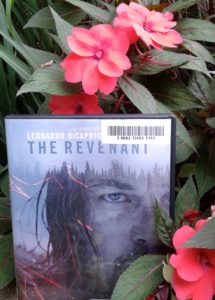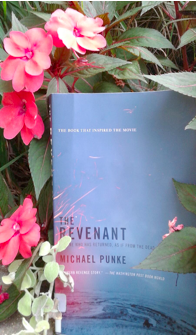 A screenplay bridges the gap between novel and movie and converts the story into images and dramatized action. In the narrative-heavy novel, The Revenant by Michael Punke, readers know Hugh Glass’s thoughts and motivations as if inside his head, third person point of view close. Although this works well in the book “The Revenant – A Good Idea for a Novel,” on the big screen, viewers would see Hugh Glass and be clueless. What is he thinking?
A screenplay bridges the gap between novel and movie and converts the story into images and dramatized action. In the narrative-heavy novel, The Revenant by Michael Punke, readers know Hugh Glass’s thoughts and motivations as if inside his head, third person point of view close. Although this works well in the book “The Revenant – A Good Idea for a Novel,” on the big screen, viewers would see Hugh Glass and be clueless. What is he thinking?
Screenwriter, Michael L. Smith converts the novel into scenes that comprise a screenplay. The motives and conflicts are visible with dialogue, action or flashbacks. The director, Alejandro G. Inarritu, morphs the screenplay into award-winning creative expression. Smith minimizes the object story of the stolen Amstadt and maximizes the relationships, injustice, and personal loss. The screenplay shows theme, motivation and key conflicts in ten pages translating to ten minutes of screen time. In a quick comparison of the first ten pages, see how the movie builds on the screenplay scenes.
It’s a Good Movie When . . .
- The opening scene draws viewers into the character. Smith begins the screenplay with Glass whispering “not yet” to his sweat-soaked shivering son. The film takes this touching scene and places it in the aftermath of an attack where Glass finds his injured son and reveals his own motivation in the words, “Don’t give up. As long as you can grab a breath, you fight.” Contrast this to the novel which uses in medias res (beginning in the middle) to show Glass experiencing Fitzgerald and Bridger in the act of abandoning him and stealing his gun and knife. Each opening scene shows injustice – a sick child, a burned village, and an injured man left behind. Each version begs to know what happens next to this character.
- The antagonist is a worthy adversary. The screenplay, scene two, begins in the middle of a campsite of hungry and homesick trappers. Dialogue centers around Fitzgerald challenging and undercutting the leadership of Captain Henry who wears a buckskin jacket with long fringe. I visualize Daniel Boone or Davy Crockett; the Captain must be a good guy. We know Fitzgerald will be trouble. In the film, scene two luxuriates with precious minutes of water running in trees and nature sounds with camera angles the Sierra club would envy. The camera catches the quiet step of Glass and two others creeping toward an elk. Scene three opens to Fitzgerald ordering the trappers to bundle more furs together. He appears to have some authority. Then when the Arikara chief attacks, Fitzgerald proves to be a fighter. So far, the chief has my vote for the antagonist. In scene four on the boat and scene five at the next camp, Fitzgerald challenges the Captain and insults Glass. Now it is known. He will be a problem when left to care for Glass. In the novel, Glass pursues Fitzgerald regardless of dangerous weather or hostile tribes of Arikara warriors. These two immediate threats are far more interesting than the eventual meeting of Glass and Fitzgerald at the end of the story. In the film, the meeting of Glass and Fitzgerald is a Hollywood big ending.
- Art is not forgotten. Inarritu deserves his Academy Award for his choice of setting alone. The scenery behind the blood and mutilation is ruggedly beautiful. My in-house cinematography expert reports the crew filmed only with natural light in many Canadian locations and in Argentina. Cinematographer, Emmanuel Lubezki, also wins an Academy Award for his efforts on this big screen epic. The film sports many talented actors, but only one can win, best actor at the Academy Awards. For the record, Hugh Glass did not sleep inside a horse; it is a Hollywood stunt. If you haven’t seen the film, do it for this scene — Leonardo Dicaprio, horse, cliff and snow.
Contrast Inarritu’s production with Jason Blum and his low-budget film production company (films with price tags in the thousands and receipts in the millions). NPR’s Ari Shapiro recently interviewed Blum. A 2013 Forbes article by Mark Hughes puts Blum’s movies in perspective. Blum is responsible for Paranormal Activity 1, 2, 3, 4 and however many he produces after the sixty plus films already on his resume (including Whiplash). He says production costs are contained by restricting the number of locations, eliminating big stunts, and using unknown actors.
The filming of the Revenant did none of these. The Revenant is big budget, multi-continent, 156 minutes, and a makeup artist’s dream for blood, wounds and semi-frozen big star talent.
